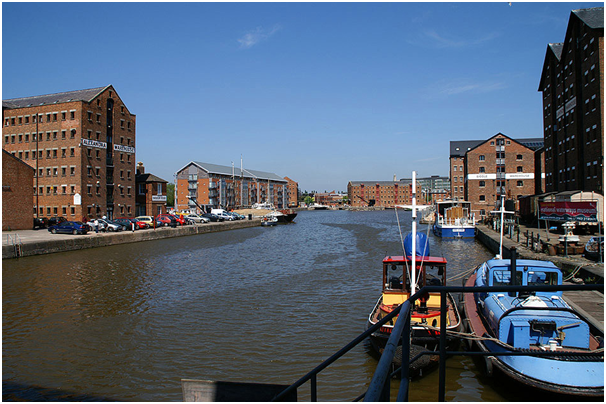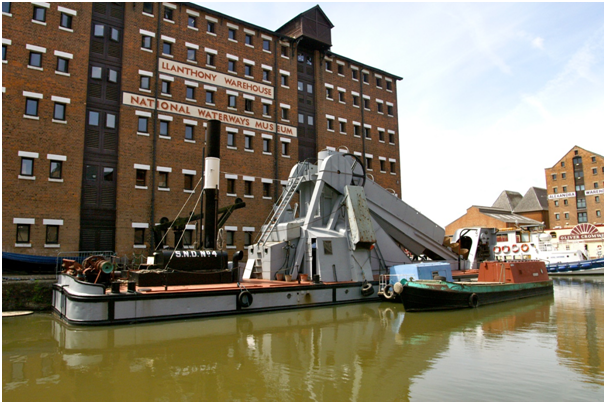Gloucester has a fascinating history. It’s a relatively small place to be called a city, but thanks to its glorious cathedral, it is the county of Gloucestershire. Much of the city’s success and rise to prominence was due to its location on the River Severn. It’s close proximity to the Welsh border also made it a favourable base for a fortress for Roman soldiers. Here we look at a brief history of the importance of Gloucester Docks and how this waterway put Gloucester firmly on the map.
As you walk past the old warehouses, now transformed into apartments, shops, restaurants, a gym and cinema complex – you look out over the Gloucester Docks Main Basin. This is the first hint that this was a place of some importance and is, in fact, the UK’s most inland port. Today it’s bustling with tourists, pleasure boats and residents at leisure, but it was a thriving base of industrial activity. To find property close to such a hive of activity, contact Estate Agents Gloucester at http://www.tgres.co.uk/

The basin at Gloucester Docks is the terminus of the Gloucester to Sharpness canal which stretches for 16 miles. The canal was opened in 1827 to allow ships to bypass a particularly tricky and winding stretch of the river Severn, meaning Gloucester became an inland port. When it was first in operation, the canal was the deepest and widest in the whole country. It enabled bigger sea-faring vessels to offload cargo which could them be sent by barge on the river up to the Midlands.
It was an incredibly busy port, with many different vessels coming and going carrying grain and timber. Vessels would have included narrowboats, sailing ships, steam ships and barges. The warehouses contained sawmills, workshops, corn mills and rope makers, to name just a few.
So busy were the docks that boats and ships had to queue to access the unloading areas. This led to a further dock being built during the 1840s to give more quay space. Called the Victoria Dock, it was finished in 1849. Many of the iconic warehouses were constructed between 1823 and 1873 to provide space for corn to be stored. Now they are used for office space, apartments and retail units, with the Llanthony Warehouse housing the National Waterways Museum.

The air is bustling too, as the city has a large population of seagulls with only Aberdeen having a bigger number. Conditions here are perfect for the birds, with a landfill site and plenty of city buildings to act as artificial cliffs to nest on.
At the turn of the 20th century, the commercial aspect of the docks started to decline and had all but ended by the 1980s. After many years of decline, abandonment and ruin, the area is now an example of successful, attractive, and regenerated project celebrating the vibrant and important history of Gloucester’s waterways. The dry docks here are still in constant use and are two of very few dry docks in the UK. Traditional and classic vessels come here for repair work using traditional methods and techniques.



